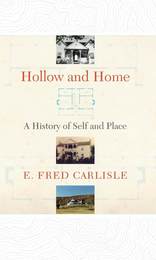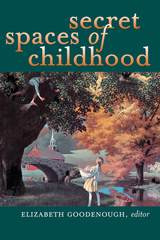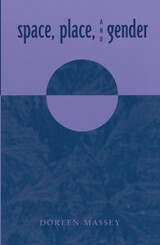3 books about Personal space

Hollow and Home
A History of Self and Place
E. Fred Carlisle
West Virginia University Press, 2017
Hollow and Home explores the ways the primary places in our lives shape the individuals we become. It proposes that place is a complex and dynamic phenomenon. Place refers to geographical and constructed places—location, topography, landscape, and buildings. It also refers to the psychological, social, and cultural influences at work at a given location. These elements act in concert to constitute a place.
Carlisle incorporates perspectives from writers like Edward S. Casey, Christian Norberg-Schulz, Yi-Fu Tuan, and Witold Rybczynski, but he applies theory with a light touch. Placing this literature in dialog with personal experience, he concentrates on two places that profoundly influenced him and enabled him to overcome a lifelong sense of always leaving his pasts behind. The first is Clover Hollow in Appalachian Virginia, where the author lived for ten years among fifth-, sixth-, and seventh-generation residents. The people and places there enabled him to value his own past and primary places in a new way. The story then turns to Carlisle’s life growing up in Delaware, Ohio. He describes in rich detail the ways the town shaped him in both enabling and disabling ways. In the end, after years of moving from place to place, Carlisle’s experience in Appalachia helped him rediscover his hometown—both the Old Delaware, where he grew up, and the New Delaware, a larger, thriving small city—as his true home.
The themes of the book transcend specific localities and speak to the relationship of self and place everywhere.
Carlisle incorporates perspectives from writers like Edward S. Casey, Christian Norberg-Schulz, Yi-Fu Tuan, and Witold Rybczynski, but he applies theory with a light touch. Placing this literature in dialog with personal experience, he concentrates on two places that profoundly influenced him and enabled him to overcome a lifelong sense of always leaving his pasts behind. The first is Clover Hollow in Appalachian Virginia, where the author lived for ten years among fifth-, sixth-, and seventh-generation residents. The people and places there enabled him to value his own past and primary places in a new way. The story then turns to Carlisle’s life growing up in Delaware, Ohio. He describes in rich detail the ways the town shaped him in both enabling and disabling ways. In the end, after years of moving from place to place, Carlisle’s experience in Appalachia helped him rediscover his hometown—both the Old Delaware, where he grew up, and the New Delaware, a larger, thriving small city—as his true home.
The themes of the book transcend specific localities and speak to the relationship of self and place everywhere.
[more]

Secret Spaces of Childhood
Elizabeth Goodenough, Editor
University of Michigan Press, 2003
Whether it's real or imaginary, every child has a secret space, and this remarkable book explores them all. For some it's a treehouse or a hidden spot beneath a bush; for others it's a private psychic refuge--a favorite book, or a dollhouse that becomes a stage for a young imagination. As the more than four dozen pieces collected here reveal, such spaces play a key role in a child's development and retain a symbolic power that resonates throughout our adult lives. No reader will put this book down without experiencing a rush of familiar memories and new insights into that bygone world.
Poet Diane Ackerman evokes that "parallel universe behind the eyes / which no one shared, or dare discover"; Paul Brodeur recalls the "fort" where he and his brother defended Cape Cod against invaders in World War II; Nobelist Wole Soyinka offers a poignant verse portrait of Africa's lost children; and Paul West remembers youthful encounters with his eccentric neighbors Edith and Osbert Sitwell. Elsewhere, Robert Coles summons up memories of his first years as a doctor and a wise young patient who taught him a lesson he has never forgotten, and Mary Galbraith shows how childhood loss is transformed into art in Ludwig Bemelmans's classic Madeline. And these are just a few of the gems in a treasury that includes Anne Frank, the controversial photographs of Sally Mann and the crudely eloquent drawings of young South African refugees, clinical case studies and profoundly personal imagery.
A perceptive, thought-provoking work for general readers, Secret Spaces of Childhood opens a wonderful window on the world of the young.
Elizabeth Goodenough is Lecturer in Comparative Literature, the Residential College, University of Michigan.
[more]

Space, Place, and Gender
Doreen Massey
University of Minnesota Press, 1994
A leading feminist geographer puts forth new ways of thinking about space and place.
In these days of global acceleration on the one hand and intensifying local nationalisms on the other, how should we be thinking about space and place? This new book brings together Doreen Massey's key writings on this debate. In it she argues that we have seen some problematical readings of both terms in recent years, and she proposes an alternative approach more adequate to the issues facing the social sciences today.
Massey has organized these debates around the three themes of space, place, and gender. She traces the development of ideas about the social structure of space and place, and the relation of both to issues of gender and certain debates within feminism. Beginning with the economy and social structures of production, Massey develops a wider notion of spatiality as the product of intersecting social relations. On this basis she proposes an approach to "places" that is essentially open and hybrid while always provisional and contested. The themes intersect with much current thinking about identity within feminism and cultural studies.
The chapters range from studies of the concepts of place employed in debates on uneven regional development and inner-city problems to arguments about the relationship between the conceptualization of space/place and the social construction of gender relations.
"This book presents a collection of Massey's writings that have appeared over the last two decades. The volume is, however, more than a sum of its parts, in that Massey uses commentaries throughout the book to delineate an intellectual trajectory in Anglo geography that connects the concerns of economic geography with critiques and extensions by feminist and postcolonial writers. Massey builds a multifaceted argument of the richness of geographical analysis and its centrality for contemporary social theory debates." Professional Geographer
"In a compilation of essays spanning over fifteen years, Space, Place and Gender, Doreen Massey explores the intricate and profound connection of space and place with gender and the construction of gender relations. Spaces and places are gendered, she argues, at once reflecting and affecting how gender is understood." Harvard Design Magazine
Doreen Massey is professor of geography at the Open University in the United Kingdom. She is the author of five books, including Spatial Divisions of Labour (1984) and, with David Weild and Paul Quintas, High-Tech Fantasies (1991).
[more]
READERS
Browse our collection.
PUBLISHERS
See BiblioVault's publisher services.
STUDENT SERVICES
Files for college accessibility offices.
UChicago Accessibility Resources
home | accessibility | search | about | contact us
BiblioVault ® 2001 - 2024
The University of Chicago Press









